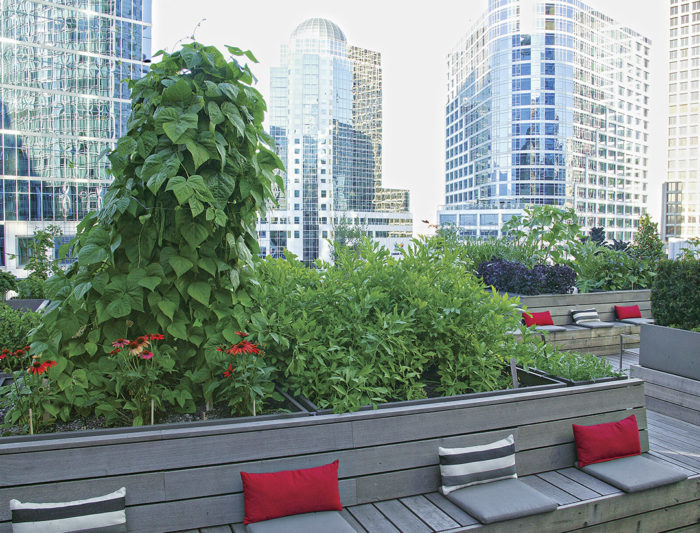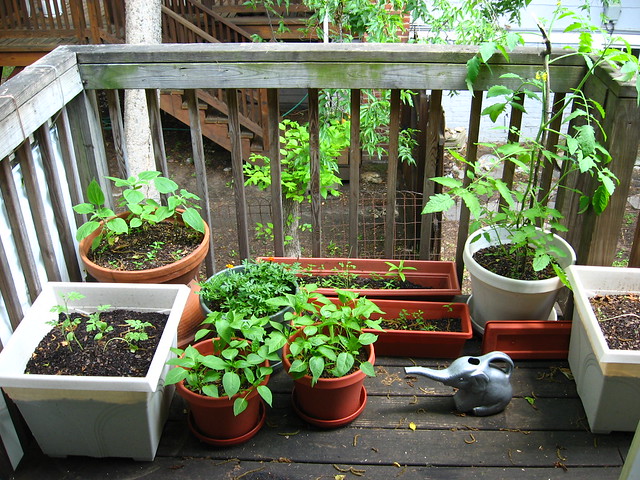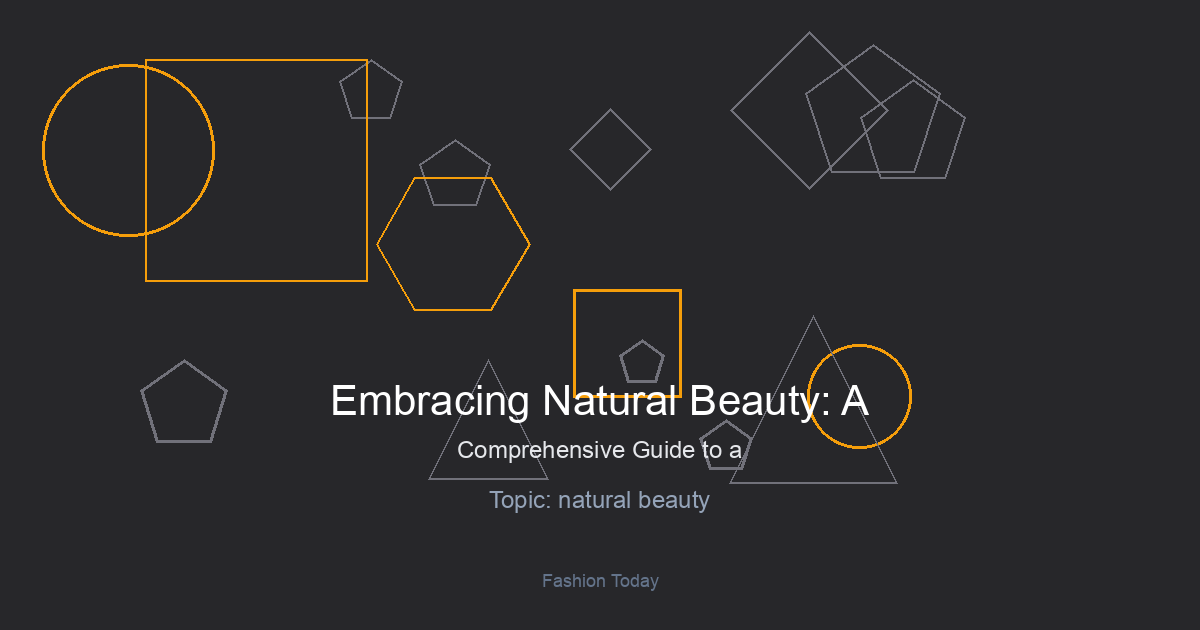
The Ultimate Guide to Urban Gardening: Cultivating Abundance in City Spaces
In the heart of bustling cities, a green revolution is taking root. Urban gardening has blossomed from a niche hobby into a significant lifestyle movement, transforming concrete balconies, overlooked rooftops, and sunny windowsills into productive, verdant sanctuaries. This shift is about more than just aesthetics; it’s a powerful convergence of Sustainable Living, Health & Wellness, and a desire for a deeper connection with our food. For many city dwellers, the challenge lies in the inherent limitations of urban life: minimal space, variable light, and a lack of traditional garden plots. However, with the right knowledge and techniques, it’s entirely possible to overcome these obstacles and cultivate a bountiful harvest. This comprehensive guide will delve into the technical aspects, practical strategies, and profound benefits of urban gardening, providing you with the actionable insights needed to grow big in even the smallest of spaces. From soil science in a pot to advanced vertical growing systems, we’ll explore how to create a thriving garden that enhances not only your home but also your well-being.
Table of Contents
ToggleFoundations of a Thriving Urban Garden: Planning and Preparation
Success in urban gardening begins long before the first seed is sown. A meticulous planning phase is the single most important factor in transforming a small urban space into a productive oasis. This involves a careful assessment of your unique environment and a technical understanding of the foundational elements that support plant life. Rushing this stage is a common pitfall that can lead to frustration and poor results.
Assessing Your Microclimate: Sun, Wind, and Water
Every balcony, patio, or windowsill has its own microclimate. The first step is to become a detective in your own space. Sun mapping is critical. Observe your potential garden spot throughout the day, noting how many hours of direct sunlight it receives. You can use a smartphone app or simply check every hour for a full day. This data dictates your plant choices:
- Full Sun (6-8+ hours): Ideal for fruiting plants like tomatoes, peppers, cucumbers, and most herbs like basil and rosemary. – Partial Sun/Shade (4-6 hours): Perfect for leafy greens (lettuce, spinach, kale), root vegetables (radishes, carrots), and herbs like mint and parsley.
- Shade (less than 4 hours): Challenging for vegetables, but suitable for certain herbs, mushrooms, and ornamental plants.
Wind is another crucial factor, especially for high-rise balconies. Persistent wind can dehydrate plants, damage foliage (windburn), and even topple containers. Consider installing a simple windscreen made of burlap or bamboo or choosing low-profile, sturdy plants. Finally, assess your water access. Will you be carrying watering cans through your apartment, or do you have access to an outdoor tap for a hose or a drip irrigation system? Planning your watering strategy from the start is a key component of Home Improvement for any aspiring urban gardener.
Choosing Your Growing Medium: Soil Science in a Container
One of the biggest mistakes new container gardeners make is using soil from a backyard or park. Garden soil is heavy, compacts easily in pots, drains poorly, and can contain pests, diseases, and weed seeds. For container gardening, a soilless potting mix is essential. These mixes are engineered for the specific environment of a pot. A high-quality mix typically contains three key components:
- Moisture Retention: Peat moss or coco coir acts like a sponge, holding water for the plant’s roots.
- Aeration & Drainage: Perlite or vermiculite creates air pockets in the soil, preventing compaction and allowing excess water to drain away, which is vital for preventing root rot.
- Nutrition: Compost or worm castings provide a slow-release source of essential organic nutrients.
While pre-made bags are convenient, creating your own mix as a DIY Project can be more cost-effective and allows for customization. A classic recipe is one part peat moss or coco coir, one part perlite or vermiculite, and one part compost. This foundation is the bedrock of your garden’s health and a key aspect of effective Plant Care.
Maximizing Space: Advanced Techniques and Technologies

The core challenge of Urban Gardening is limited square footage. The solution is to think beyond the horizontal plane and employ innovative techniques and technologies that maximize every available inch. This is where creativity meets engineering to turn a small footprint into a high-yield garden.
Vertical Gardening: Reaching for the Sky
When you can’t build out, build up. Vertical gardening is the most effective strategy for small-space cultivation. This can range from simple DIY solutions to sophisticated modular systems.
- Trellises and Cages: Essential for vining plants like cucumbers, pole beans, peas, and indeterminate tomatoes. A simple lattice or wire grid allows these plants to climb, keeping fruit off the ground and saving valuable floor space.
- Stacking Planters: These are commercially available pots that stack on top of one another, creating a tower of plants. They are perfect for strawberries, herbs, and lettuces.
- Wall-Mounted Pockets and Planters: Fabric pockets or modular plastic planters can be attached to a sunny wall, creating a “living wall.” This is an excellent solution for growing a large number of shallow-rooted plants like herbs and greens and serves as a stunning piece of Home Decor.
- Hanging Baskets: Don’t forget the space above. Hanging baskets are ideal for trailing plants like cherry tomatoes, certain herbs, and flowers that attract beneficial pollinators.
Container Selection and Intensive Planting
The container is your plant’s entire world. Choosing the right one is crucial. Different materials offer different benefits. Terracotta is porous and allows for good airflow to the roots but dries out quickly. Plastic is lightweight and retains moisture well but can get hot in direct sun. Fabric grow bags are a modern favorite, as they promote excellent aeration and “air pruning” of roots, which encourages a healthier, more fibrous root system. The most important specification is size. A plant in a too-small pot will be stunted and stressed. As a rule of thumb, a 5-gallon container is a minimum for a single tomato or pepper plant, while a 1-2 gallon pot is sufficient for most herbs.
Once you have your containers, employ intensive planting methods. Square Foot Gardening principles can be adapted for containers by planting in a dense grid rather than traditional rows. Another powerful technique is Succession Planting. Instead of planting all your lettuce at once, sow a few seeds every two weeks. This provides a continuous, manageable harvest throughout the season, contributing to effective Meal Planning and reducing waste.
Nurturing Your Garden: Advanced Care and Troubleshooting
An urban garden is a dynamic ecosystem that requires consistent attention. Mastering the arts of watering, feeding, and pest management in a container environment is key to long-term success and a bountiful harvest.
Watering Wisely: The Art of Urban Hydration
Watering is the most frequent task and the easiest to get wrong. Containers dry out much faster than in-ground gardens, especially on hot, windy days. The “finger test” is the most reliable method: insert your finger two inches into the soil. If it feels dry, it’s time to water. Water deeply until it runs out of the drainage holes, ensuring the entire root ball is saturated. Overwatering is just as dangerous, leading to root rot. For those with a busy lifestyle or a focus on Work-Life Balance, consider investing in Technology for Home. Self-watering containers have a built-in reservoir that wicks water up to the roots as needed. A simple drip irrigation system connected to a timer can automate the process, ensuring consistent moisture, conserving water, and providing peace of mind—a form of Smart Home technology for your garden.

Feeding Your Plants: Container Nutrient Management
In a closed container system, nutrients are a finite resource. Every time you water, some nutrients are leached out through the drainage holes. This means container plants are heavy feeders and require regular fertilization. You can choose between organic and synthetic options. Organic fertilizers, like liquid fish emulsion or seaweed kelp, feed the soil’s microorganisms and provide a slow, steady supply of nutrients. Synthetic liquid fertilizers, like a balanced 10-10-10 formula, provide an immediate, direct boost to the plant. A good practice is to amend your soil with a granular, slow-release organic fertilizer at the beginning of the season and supplement with a liquid feed every 2-4 weeks for heavy-feeding plants during their peak growing period.
Integrated Pest Management (IPM) for Small Spaces
Pests can and will find your urban garden. The goal of IPM is not to eliminate all insects but to manage them in a way that prevents significant damage, promoting an Eco-Friendly Living approach. Prevention is the first line of defense: ensure good airflow between plants, water the soil instead of the leaves, and remove any diseased or yellowing foliage promptly. If pests like aphids or spider mites appear, start with the least toxic solution. A strong jet of water can often dislodge them. If that fails, an application of insecticidal soap or neem oil is an effective organic control. These are safer for you, your pets, and beneficial insects compared to harsh chemical pesticides.
The Urban Harvest: Benefits for Body, Mind, and Wallet
The rewards of urban gardening extend far beyond the tangible harvest of fresh produce. It is a holistic practice that positively impacts physical health, mental well-being, and even personal finances, making it a cornerstone of a modern, balanced lifestyle.

From Garden to Table: Nutrition and Financial Savings
There is nothing that compares to the flavor and nutritional quality of a vegetable picked moments before it’s eaten. The connection between your garden and your kitchen can revolutionize your approach to Food & Cooking. Freshly harvested produce is packed with vitamins and antioxidants that degrade over time during shipping and storage. This direct access to fresh ingredients inspires Healthy Recipes and better Nutrition News for your family. Furthermore, a well-managed container garden can make a noticeable dent in your grocery bill. A few tomato plants, a pot of lettuce, and a collection of herbs can save a surprising amount of money over a growing season, offering practical Budget Tips and contributing to your Financial Planning goals.
Gardening for the Mind: A Tool for Mindfulness and Stress Management
Beyond the plate, the act of gardening itself is a powerful tool for Mental Health. Tending to plants is a form of active Mindfulness and Meditation. The focus required to prune a tomato plant or check for pests pulls you into the present moment, providing a much-needed respite from digital distractions and daily stressors. The gentle, repetitive tasks can be incredibly calming, reducing anxiety and promoting a sense of accomplishment. For those practicing Stress Management or seeking a better Work-Life Balance, spending just 15-20 minutes in your garden can be a restorative practice that improves mood and mental clarity. It’s a tangible way to practice Self-Improvement and cultivate a peaceful corner in a chaotic world.
Conclusion: Cultivating Your Urban Sanctuary
Urban gardening is a transformative endeavor that empowers city dwellers to reclaim a piece of nature. It proves that a lack of space does not have to be a barrier to growing your own food and creating a green, living environment. By starting with a solid plan, understanding your unique microclimate, and employing smart techniques like vertical gardening and proper container management, you can cultivate a surprisingly abundant harvest. The journey offers more than just fresh vegetables; it is a pathway to a healthier diet, a powerful tool for mental well-being, and a practical step towards a more sustainable lifestyle. Whether you have a sprawling rooftop or a single sunny windowsill, the principles remain the same. Start small, be patient, and embrace the process. You will be cultivating not just a garden, but a richer, more connected way of life.
You may also like
Archives
- October 2025
- September 2025
- August 2025
- October 2023
- September 2023
- August 2023
- July 2023
- June 2023
- May 2023
- April 2023
- March 2023
- February 2023
- January 2023
- December 2022
- November 2022
- October 2022
- September 2022
- August 2022
- June 2022
- May 2022
- April 2022
- March 2022
- January 2022
- December 2021
- November 2021
- October 2021
- September 2021
- August 2021
- November 2020
- July 2020
- May 2020
- April 2020
- March 2020
- February 2020
- December 2019
- August 2018
- July 2018
- June 2018
- April 2018
- March 2018
Categories
- Age Groups
- Aging In Place
- Aging Well
- AI/ML
- Alternative Medicine
- Animal Health
- Animals
- Anti-Aging
- Applied AI
- Automation
- Babies
- Baby
- Book Reviews
- Breastfeeding
- Budget Optimization
- Budgeting
- Business
- Career Development
- Career Growth
- Cats
- Chess
- Circular Economy
- Cleaning Tips
- Cloud Computing
- Cognitive Science
- Community
- Community Building
- Community Engagement
- Computer Vision
- Content Strategy
- Cultural Events
- Cycling
- Data Science
- Design Psychology
- Developer Productivity
- Diet
- Diet
- Digital Advertising
- Digital Media
- Digital Wellbeing
- DIY Projects
- Dogs
- Eco-Friendly Living
- Ecology
- Equity Compensation
- Exercise
- Family
- Family Life
- Fashion Tech
- Financial Analysis
- Financial Planning
- Flooring Maintenance
- Food
- Greece
- Greek
- Greek Food
- Hardware Engineering
- Health
- Health & Wellness
- Health And Wellness
- Health Science
- Health Tech
- Healthy Recipes
- Holistic Health
- Holistic Wellness
- Home & Living
- Home Decor
- Home Improvement
- Home Organization
- Housing
- Hydroponics
- Infant Development
- Ingredient Deep Dive
- Interior Design
- Internet of Things
- Investment Strategy
- IoT
- Kids
- Lifestyle
- Lifestyle News
- Literature
- Materials Science
- Media Analysis
- Mental Health
- Miami
- Miami
- Miami Food
- Mind And Body
- Mindfulness
- Minimalism
- Mobile Development
- Natural Beauty
- Natural Cleaning
- Natural Skincare
- Neuroscience
- Nutrition
- Nutrition News
- Operating Systems
- Opinion
- Outdoor Living
- Over 40
- Over 50
- Over 60
- Parenting
- Performance Marketing
- Personal Development
- Personal Finance
- Personal Productivity
- Pet Care
- Pet Safety
- Philosophy
- Politics
- Precision Nutrition
- Prenatal Health
- Productivity
- Protein
- Psychology
- Quantified Self
- Real Estate Investment
- Recipes
- Renovation Planning
- Robotics
- Science
- Seafood
- Security
- Self-Improvement
- Senior Fitness
- Senior Living
- Skincare Science
- Sleep
- Small Space Gardening
- Smart Home
- Smart Homes
- Smoothies
- Social Impact
- Social Responsibility
- Soft Skills
- Spatial Design
- Stress Management
- Supplements
- Sustainable Living
- Sustainable Technology
- Tax Strategy
- Travel
- Uncategorized
- Urban Gardening
- Veggie
- Volunteering
- Wealth Management
- Wearable Technology
- Wellness
- Wood Staining
- Work-Life Balance
- Workplace Culture
- World




Leave a Reply